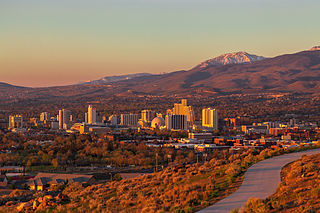
Reno is a city in the northwest section of the U.S. state of Nevada, along the Nevada-California border, about 22 miles (35 km) north from Lake Tahoe, known as "The Biggest Little City in the World". Known for its casino and tourism industry, Reno is the county seat and most populous city of Washoe County and sits in the High Eastern Sierra foothills, in the Truckee River valley, on the eastern side of the Sierra Nevada. The Reno metro area occupies a valley colloquially known as the Truckee Meadows, it is the 81st most populous city in the United States.

Sparks is a city in Washoe County, Nevada, United States. It was founded in 1904, incorporated on March 15, 1905, and is located just east of Reno. The 2020 U.S. Census counted 108,445 residents in the city. It is the fifth most populous city in Nevada. It is named after John Sparks, Nevada Governor (1903–1908), and a member of the Silver Party.

The Reno-Sparks Indian Colony in Nevada was established in the early 1900s by members of related tribes who lived near Reno for work; they became a federally recognized tribe in 1934 after forming a government under the Indian Reorganization Act.

Riverside Hotel is a former hotel and casino located in Downtown Reno, Nevada, that sits on the exact location where Reno began in 1859. The building now houses apartments and studios for artists and is listed on the National Register of Historic Places.
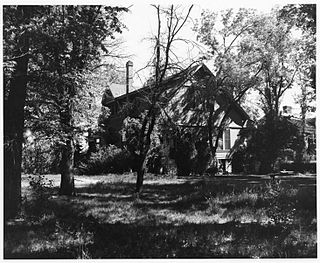
The Francis G. Newlands Home is a historic house at 7 Elm Court in Reno, Nevada, United States. Built in 1890, it is the former mansion of United States Senator Francis G. Newlands (1846-1917), a driving force in passage of the 1902 Newlands Reclamation Act. It was declared a National Historic Landmark in 1963 and listed on the National Register of Historic Places in 1966. The house is privately owned and is not open to the public.

Reno station is an Amtrak intercity train station in Reno, Nevada, served by the California Zephyr train. It is also served by Amtrak Thruway Motorcoach routes to Sacramento.
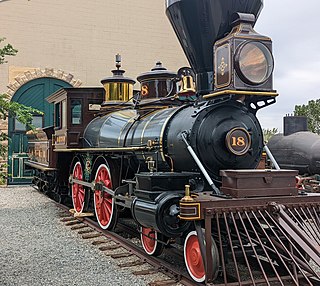
The Virginia and Truckee 18 Dayton is a historic standard gauge steam locomotive on display in Sacramento, California. It spent its working life on the Virginia and Truckee Railroad.

The former First Church of Christ, Scientist, built in 1939, is an historic Classical revival style Christian Science church edifice located at 501 Riverside Drive, overlooking the Truckee River in Reno, Nevada. Anna Frandsen Loomis, a wealthy local Christian Scientist, underwrote the $120,000 cost of the building, including land acquisition and architect's fees. She was responsible for hiring noted Los Angeles architect Paul Revere Williams, the first African-American member of the AIA. In 1998 the congregation sold the building and used the funds from the sale to construct a new church at 795 West Peckham Lane. Church member and local theater patron Moya Lear donated $1.1 million to the Reno-Sparks Theater Community Coalition, which used the funding to purchase the First Church of Christ, Scientist and renamed it the Lear Theater.
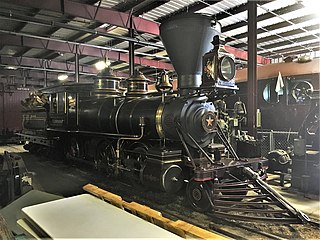
The Glenbrook is a 2-6-0, Mogul type, narrow-gauge steam railway locomotive built by Baldwin Locomotive Works in 1875 for the Carson and Tahoe Lumber and Fluming Company's 3 ft narrow-gauge railroad.

The Virginia Street Bridge was a historic concrete double arch bridge in downtown Reno, Nevada, US, carrying Virginia Street across the Truckee River. It was added to the National Register of Historic Places in 1980. The bridge is sometimes referred to as the "Wedding Ring Bridge" or the "Bridge of Sighs".
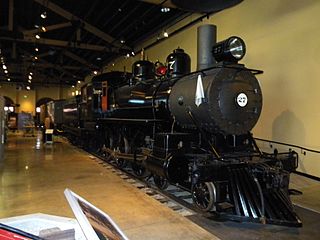
Virginia and Truckee Railroad Engine No. 27 is a historic standard gauge steam locomotive. It was on display at the Nevada State Railroad Museum in Carson City, Nevada, but was traded with The Dayton and is currently on display at the Comstock Historical Center in Virginia City. It was the last locomotive acquired new by the Virginia and Truckee Railroad, and pulled the last commercial train for the V&T on May 31, 1950, the date that freight and passenger services officially terminated for the company. The locomotive was placed on the National Register of Historic Places due to its association with the Virginia and Truckee Railroad and transportation development in Nevada.

Bethel AME Church is a historic African Methodist Episcopal church at 220 Bell Street in Reno, Nevada. It has served as a hub for Reno's African American community since it was built in 1910 for early black settlers. In addition to its role as a religious and community center, it functioned as a resource center for black divorce seekers who faced difficulties in a segregated city during the middle decades of the twentieth century. In the 1960s, during the American civil rights movement, the church provided a meeting place for the local chapter of the National Association for the Advancement of Colored People (NAACP) and other civil rights activists.
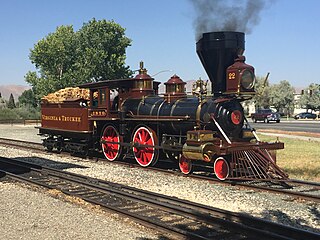
Virginia and Truckee Railroad No. 22, also known as the "Inyo", is a 4-4-0 "American" type steam locomotive that was built by the Baldwin Locomotive Works in 1875 and pulled both passenger and freight trains. The Inyo weighs 68,000 lb (31,000 kg). Its 57 in (140 cm) driving wheels deliver 11,920 lb (5,410 kg) of tractive force. In 1877 it was fitted with air brakes and in 1910 it was converted to burn oil rather than wood.
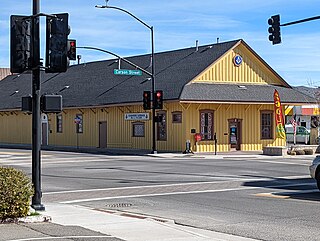
The Virginia & Truckee (V&T) Railroad Depot of Carson City, Nevada is a historic railroad station that is listed on the U.S. National Register of Historic Places (NRHP). It is significant for its association with the economically important role of the V&T railroad historically in Carson City following discovery of the Comstock Lode mine in 1859. To a lesser degree, according to its NRHP nomination, the depot building is also significant architecturally "as a well-preserved example of a wood-frame passenger depot procured from a railroad company pattern book within the V&T's former sphere of operation."

The Robison House in Sparks, Nevada, at 409 13th St., is a historic mansion-like house with Colonial Revival elements built c. 1904. The property includes small rental cottages used in Reno, Nevada's "divorce trade". It is listed on the National Register of Historic Places (NRHP).

The Frey Ranch, at 1140 W. Peckham Ln. near Reno, Nevada, dates from 1870, when a 240 acres (97 ha) ranch was founded. A 1 acre (0.40 ha) site of its main house, including Late Victorian architecture, survives. It was listed on the National Register of Historic Places in 1999; the listing included three contributing buildings.

Immaculate Conception Catholic Church, is currently located at 2900 McCarran Way in Sparks, Nevada, United States. It is part of the Roman Catholic Diocese of Reno.
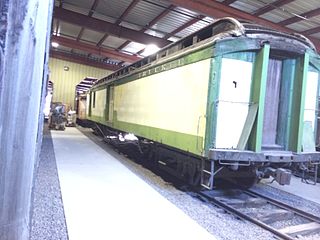
The Second Railroad Car No. 21, at the Nevada State Railroad Museum, located at 2180 S. Carson St. in Carson City, Nevada is a historic railroad car of the Virginia & Truckee line that was built in 1907. It was built by the American Car & Foundry. It was listed on the National Register of Historic Places in 1978.
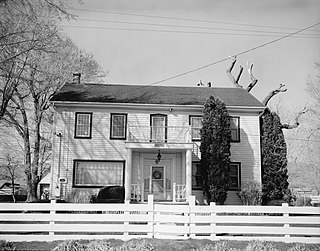
The Peleg Brown Ranch, at 12945 Old Virginia Rd. in Reno, Nevada, dates from 1864. Also known as the Louis Damonte Ranch, it includes Bungalow/craftsman and Greek Revival architecture. It was listed on the National Register of Historic Places in 1994; the listing included five contributing buildings on about 4 acres (1.6 ha).

The Newlands Historic District in Reno, Nevada is a historic district on the bluffs south of the Truckee River which was listed on the National Register of Historic Places in 2016.























